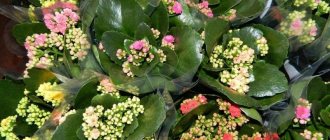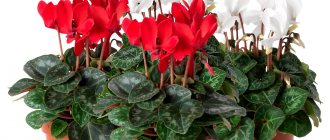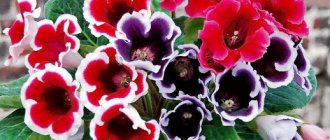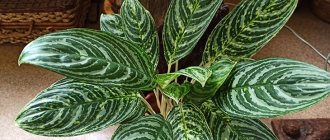A quick, simple and effective way to radically change your home, hide design flaws or highlight advantages can be the purchase of large indoor plants. Proper placement of them in the apartment makes the room unique and inimitable. Of course, it’s nice to grow a large specimen from a small seedling or seed. But this will take a lot of effort and time. Purchasing a ready-made outdoor plant will allow you to immediately enjoy all the benefits of its presence in the house.
A large plant will be appropriate in the interior of any style or architectural direction. Technological and metallic high-tech, luxurious Empire, Art Nouveau or Baroque home trees will harmoniously decorate and enliven.
Spectacular and even exotic inhabitants of tropical countries turned out to be very adapted to living conditions in our homes. And if you have to build a house and raise your son on your own, then we will be happy to help you choose your ideal tree for the house.
Calamondin
A perennial tree of the oral family from East Asia, bred by crossing a kumquat with a mandarin orange. When grown at home, it reaches a height of 60-150 cm. The plant is distinguished by its juicy, dense greenery and bears fruit abundantly.
Calamondin does not tolerate direct sunlight and loves warmth. Feels best at a temperature of 18-20 ºC. In summer, the plant should be watered more abundantly than in winter.
Creeping Crassula species
The group includes fat plants with soft lodging shoots, growing quickly and occupying a large space. They can be grown separately in wide flat pots, included in compositions, or planted as a cover plant to large succulents.
Mossy (mossy)
Muscosa, synonym Lycopodioides, may belong to the previous group. A popular species with a shallow root system. The shoots are thin, soft, and due to the many small lettuce leaves clasping the stems, they appear tetrahedral.
The young plant stretches upward, the adult forms a chaotic bush 15-20 cm high, producing tiny greenish-yellow flowers. Often forms roots on shoots. Shade-tolerant, undemanding species, easily propagated, develops quickly, and literally falls out of the pot after a few years.
Milky
C. Lactea in cultivation reaches a maximum of 30 cm. It is an ampelous plant with brownish shoots, obovate leaves, pointed at the end, 3-4 cm long, 2-3 cm in cross section.
The plates are soft green and fleshy. The peculiarity of the species is that white dots of salt from the evaporated liquid protrude along the edge.
Crassula is very easy to grow, suitable for beginners. She is one of the ancestors of the famous monstrous varieties of fat girls Gollum and Hobbit.
Spot
C. picturata is distinguished by lodging, well-branched stems. The leaves are small, 15 mm long, 8 mm wide, green. The front part of the plate is covered with red specks, the reverse – purple.
Grouped
C. socialis is a type of groundcover Crassula. Thin soft shoots branch strongly, spread, the ends are raised, which is why it seems that many tiny rosettes are growing in the pot.
Flat lettuce leaves, the tip of which forms an obtuse angle, reach 5 mm in length, decorated with almost imperceptible thin cilia that extract moisture from the air. Crassula of this species grows quickly, sometimes producing small pinkish-white flowers.
Cooper
C. Cooperi is a fat plant with lodging stems up to 15 cm long. The leaves have a sharp tip, are surrounded by villi along the edges, and grow in a spiral. The color is silver with light green specks and a rim.
There is a variety of Crassula cooperi Regel with a brown-green background and purple spots.
Dracaena fragrant
A tall plant of the Asparagus family, native to Africa. In room conditions it can grow up to two meters. It has a woody trunk and long narrow leaves at the top of the crown and around the trunk.
Prefers moderate lighting at temperatures from 18 to 25 ºC, and is not afraid of shadows. Dracaena is unpretentious in care; it requires regular moderate watering without waterlogging the soil and loosening. Water for watering this plant should be settled.
Tall indoor plants
Tall indoor plants include several particularly popular species that can be used to decorate home or office interiors. Among the “giants” there are varieties of palm trees, ficus, hibiscus, etc.
Palm trees
A non-flowering option for tall plants for a room is the palm tree. There are several types that can be placed indoors:
- Arecaceae;
- Kentia palm;
- Ponytail palm.
Huge palm tree in the interior of the room
There are other types, types of indoor palm trees that will fit into the design of the room or will decorate a winter garden or greenhouse.
Note! A palm tree can have a bush-like or tree-like trunk, much depends on its natural habitat
Ficus
Ficuses have many varieties, among which there are specimens reaching a height of more than 1.5 m. This plant is valued for its unpretentiousness and high degree of survival in any conditions. The most outstanding option among ficus trees in terms of growth is the rubber tree.
Hibiscus, or Chinese rose
Hibiscus has another name, Chinese rose, because its flowers are very similar to the small buds of the “queen of flowers”. But many flower growers claim that the buds are more like a bell in shape and size.
Huge hibiscus for the room
Hibiscus can be a shapeless bush of enormous height and width. Due to the rapid growth and branching of the hibiscus crown, it can be shaped by pruning. It turns out to be a beautiful flowering bush or tree.
Dieffenbachia
A popular houseplant of the araceae family, imported from South America, named after a botanist from Germany. Loves light and warmth, but needs protection from the scorching rays of the sun.
The plant has thick stems with large variegated leaves. If the stem is damaged, it releases poisonous juice that can cause a burn if it comes into contact with the mucous membranes of the eyes, nose or mouth. Caring for Dieffenbachia is not difficult; just water the plant generously and maintain the room temperature at least 18 ºC.
The most unpretentious
Hovea
An exotic palm tree is a wonderful decoration for any interior; it can be planted in a pot that will be combined with furniture elements. Or wrap it in a beautiful fabric to match the textiles in the room. Baskets or boxes are also a great option.
Sansevieria
A wonderful, unpretentious plant, a good option for the bedroom, because at night it releases oxygen. And its clean, clear lines on long, straight leaves will add elegance to the interior.
Tradescantia
An unpretentious ideal resident for southern windows. Its beautiful leaf color will play mesmerizingly in the sun. And for the interior it will be interesting natural lighting with shadows.
Sansevieria
A perennial ornamental plant without stems, popularly called “mother-in-law’s tongue.” The genus belongs to the agave family and includes approximately 60 species. Under natural conditions, the succulent can be found in Indonesia, India and Africa.
It has strong, long leaves that have the ability to store water, so it can easily tolerate skipping watering. The plant loves warmth and does not need frequent watering or replanting. The optimal temperature for keeping it is not lower than 18 ºC.
Rules for care and cultivation
In order for an indoor flower to actively grow and develop, it needs to be provided with comfortable growing conditions. Any plant, even the most unpretentious one, must be properly cared for. Otherwise, the development of diseases, withering, and, ultimately, death is possible.
How to water and fertilize?
Any home crop needs sufficient moisture. When watering, you must follow certain rules:
- It is important to moisten the soil in a timely manner. Most indoor plants like the soil to be constantly moist;
- the amount of liquid is increased during the period of active growth and flowering. Typically this occurs in spring and summer;
- on especially hot days, the plant must not only be watered, but also its above-ground parts. It is best to use a spray bottle for these purposes;
- water for irrigation should be at room temperature (for exotic plants native to hot countries, you can warm it up a little);
- some species do not like direct contact of liquid with the roots, so they should be watered very carefully.
Carefully! Excess moisture is just as detrimental to a plant as its lack, so you should not over-moisten the soil. Otherwise, there is a risk of soil acidification, rotting of the root system, and fungus developing.
Feeding and fertilizing are usually carried out during the growing season, in the spring. In some cases, additional fertilizer is required, for example, if unsuitable soil is used for growing. This procedure is best carried out in early autumn.
What diseases and pests are they susceptible to?
Numerous diseases and pests can cause serious damage to the health of houseplants. The most popular diseases are:
- darkening of leaf edges;
- leaf curling;
- the appearance of light spots on the surface of the sheet;
- powdery mildew;
- gray mold;
- wet rot;
- mosaic virus.
There are also a large number of pests that actively reproduce on the body of the flower, devouring it. This:
- spider mite;
- soft-bodied tick;
- thrips;
- whitefly;
- aphid;
- scale insect;
- felt;
- nematodes.
If the first signs of a disease appear on a flower (most often they manifest themselves in a change in the shape or color of the leaves), it is necessary to remove the affected areas, treat the plant with a special composition (depending on the cause) or simply reconsider its care.
Carefully! Common causes of illness are lack of moisture, dry air, and sunburn.
If pest microorganisms are found, you will need to use an antiseptic. Moreover, the treatment should be carried out repeatedly until the parasites disappear completely.
When to replant?
The best time to replant plants is early spring. During this period, most crops are just emerging from hibernation and the active growth phase is just beginning.
Most flowers are replanted early in the morning or after sunset. This time is considered the most successful, since life processes in the tissues of the flower proceed most slowly during such periods.
As for the frequency of replanting, it is necessary to build on the characteristics of a particular variety and its growth rate. Some species need to be planted in larger containers every year, others – once every few years.
Description of the reproduction process with photos
The main method of propagating indoor flowers is cuttings. This is a fairly simple process, but when performing it you must follow certain rules and sequence of actions:
- It is necessary to select a strong and viable shoot of the mother plant, which has several buds.
- Cut it with a sharp knife at an angle. The cutting location should be as close to the main stem as possible.
- Sprinkle the cutting area of the new shoot with well-ground charcoal.
- Place the shoot in a previously prepared substrate (depending on the type of plant, this can be abundantly moistened sand, water, soil).
- When several large roots appear at the cut site, it can be planted in a small pot. In this case, the soil must correspond to the type of plant and be very moist.
Important! It is best to propagate home crops in mid-spring, when the plant is most viable. Young shoots that should not show any damage are suitable for cuttings.
There is a wide variety of all kinds of indoor flowers, and each of them requires special attention and care. In this case, the plant will reciprocate and will delight its owner with a fresh and healthy appearance.
5 / 5 ( 1 voice )
Philodendron
A heat-loving tropical plant, evergreen, with thick stems and large fleshy leaves. Most common in the Pacific Islands, Australia and America.
Due to its large size, philodendron can only be grown in a spacious room, using support for better growth. The plant prefers high air humidity, is heat-loving, does not tolerate drafts and requires regular watering.
rubber tree
Rubber trees are an ideal plant for beginning gardeners who want large plants but don't want to spend a lot of money. While stores will charge large sums for rubber trees a couple of meters tall, you can grow yours almost instantly from a small 10cm tree . A small rubber tree can grow as much as 60 centimeters in one growing season and continue to grow for almost as long as you let it. If a plant outgrows its pot and there is nowhere for the roots to grow, it's time to repot it.
Calathea
An ornamental deciduous plant of the arrowroot family with large variegated leaves on long cuttings, distinguished by its grace. Calathea is quite capricious; it prefers a quiet place with moist air; low temperatures from 16 to 22ºC are suitable for it.
At higher indoor temperatures, it is recommended to periodically check the soil. Calathea should be fed with fertilizers from time to time, regularly sprayed and watered.
Mention of the Flood in world mythology
In an attempt to find the truth, let's turn to myths from other sources.
After all, if we take it as an axiom that the death of people was massive, then not only Christians, but also other nationalities suffered. Most of us perceive myths as fairy tales, but then who is the author? And the event itself is quite realistic: in the modern world, we are increasingly seeing deadly tornadoes, floods and earthquakes in all corners of the world. Human casualties from natural disasters number in the hundreds, and sometimes they occur in places where they should not exist at all.
Sumerian mythology
Archaeologists working on the excavations of ancient Nippur discovered a manuscript that says that in the presence of all the gods, on the initiative of Lord Enlil (one of the three dominant gods), a decision was made to arrange a great flood. The role of Noah was played by a character named Ziusudra. The storm raged for a whole week, and after that Ziusudra left the ark, made a sacrifice to the gods and gained immortality.
Despite the various prerequisites for a global flood, there are mentions of it in the ancient Sumerian manuscripts.
Tradescantia
A climbing plant with creeping stems, reaching a considerable length and growing well in breadth thanks to regular pinching. The leaf plates are alternately located on the stem and can have a variety of shades and shapes.
A very sun-loving plant, it feels great at room temperature and does not tolerate frost. Requires moderate watering and periodic feeding in the summer.
Gunner
This rhizomatous perennial rightfully occupies the first place on our list - not only can the plant itself “grow” up to five meters in height, but the size of the leaves of some of its species reaches one and a half to two meters in width!
Although the historical homeland of most gunners is the tropics, these exotic beauties have taken root well in botanical gardens and private garden plots around the world, not excluding Europe. In cool regions, to ensure good health, these plants only need to be insulated for the winter with leaves or branches.
https://www.youtube.com/watch?v=ytpolicyandsafetyru
In English-language gardening literature, gunnera is sometimes called “Brazilian giant rhubarb,” although these plants are not even related and belong to different families.
Caring for gunnera is not difficult - it loves loose and fertile, moderately acidic soil, sun or light partial shade, and a lot of moisture (can be planted near bodies of water). If you often have severe, snowless winters, the rhizomes can be dug up for this period, stored in damp sand and replanted in the spring.
Most often you can see sleeved gunnera in culture, although you can easily “have” its other varieties - dyed, wonderful, etc. Only if you dream of plant giants, do not make a mistake and accidentally acquire dwarf forms of Gunnera, there are such.
Japanese fatsia
A large ornamental deciduous plant with medium-sized palmate leaves - up to 35 cm. It is a similar genus of the Araliaceae family. All parts of the flower contain poison, so it is not recommended to place it in a child's room.
For maintenance, it is necessary to provide good lighting, humidify the air, regularly water, spray and fertilize once a week.
Large indoor plants are used to decorate rooms for various purposes. In addition, they perform very important functions: they purify the air and help create a positive emotional background. Palm trees and ficus trees are distinguished by their originality and can decorate any room in the apartment.
Site Digest
Buying indoor plants: step-by-step instructions. — We buy indoor plants that will grow and delight us for many years. The site will tell you how to make the right choice!
Climbing indoor plants: everything you need to know about care - In this article we will talk about climbing indoor plants, their types and names, show photos and give some useful tips for care
Plants for interior decoration - What plants will decorate the interior and require a minimum of care? We have prepared some simple tips for choosing and placing indoor plants in the interior.
When and how to fertilize plants? Part 1 - When to feed plants, what feedings and at what time will bring the greatest benefit to indoor and garden plants.
How to repot indoor plants - repotting indoor plants. We'll tell you and show you how to do it correctly and usefully for our green friends!
What does the Bible say?
Every person knows at least by hearsay about the history of the Great Flood. Let's take a brief excursion into history.
God could no longer tolerate the unbelief, debauchery and lawlessness that people had committed on earth, and decided to punish sinners. The Great Flood was intended to end the existence of people by death in the depths of the sea. Only Noah and his loved ones at that time deserved the mercy of the Creator by leading a pious life.
According to God's instructions, Noah had to build an ark that could withstand a long voyage. The vessel had to meet certain dimensions and it had to be equipped with the necessary equipment. The construction period for the ark was also agreed upon - 120 years. It is worth noting that life expectancy at that time was calculated in centuries, and at the time of completion of the work, Noah’s age was 600 years.
Further, Noah was ordered to enter the ark along with his entire family. In addition, in the holds of the ship they placed a pair of unclean animals from each species (those that were not eaten for religious or other prejudices, and were not used for sacrifices), and seven pairs of clean animals existing on earth. The doors of the ark closed, and the hour of reckoning for sins came for all mankind.
Noah performed the ritual of sacrifice, and God made a promise that the flood would not happen again, and the human race would continue to exist. Thus began a new round in the history of mankind. According to God's plan, it was with the righteous person in the person of Noah and his descendants that the foundation of a new healthy society was laid.
For the common man, this story is full of contradictions and raises a lot of questions: from the purely practical “how could such a colossus be built with the help of one family” to the moral and ethical “was this mass murder really so deserved.”
There are many questions... Let's try to find the answers.











